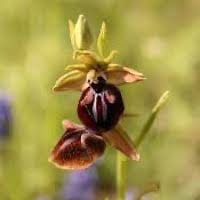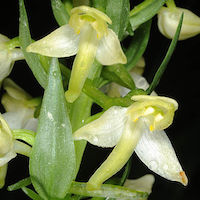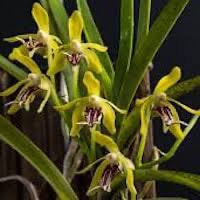MFR4 - Men's Fresh 4 - Freedom of peach
|
`Native Singaporean Orchid notes: Epidendrum Nocturnum
Epidendrum nocturnum, an orchid used in the Fresh 4 (Men) perfume for team-building workshops, is native to Florida, the Bahamas, and the West Indies but is now cultivated in Singapore. This orchid is known for its unique scent that changes with time: it smells like Vicks VapoRub in the morning and has a delicate cinnamon aroma at night. The flowers often self-pollinate and can even pollinate before opening.
|
Therapeutic Orchid notes:
|
Ophrys sphegodes subsp. Mammosa (Desf.) Soo ex E.Nelson Syn. Ophrys mammosa Desf.
Ophrys mammosa, also known as Ophrys sphegodes, is an orchid species that blooms in early April in Cyprus and other regions from southeastern Europe to Iran. Pollinated by solitary bees like Andrena nigroaenea, it uses visual and chemical cues that mimic female bee pheromones to attract the bees. This mimicry prevents bees from visiting the same flowers, aiding cross-breeding. The tubers of Ophrys mammosa are used in herbal medicine, especially for making salep. |
|
Platanthera chlorantha Cust. ex Rchb.
Ophrys mammosa, also known as Eryeshechun Lan in Chinese and Tubaiiji in traditional medicine, is harvested from August to October in north and northeast China, including Shaanxi, Gansu, Sichuan, Yunnan, and Tibet. In traditional herbal practices, it is used in Tibet as a decoction to support lung health and treat respiratory issues like coughing up blood. It can also be made into a poultice for treating lacerations, skin infections, and burns. |
|
Vanda cristata Wall ex Lindl. Syn. Trudelia cristata (Wall ex Lindl.) Senghas
Chachunwandai Lan, also known as Bhyagute phul in Nepal, Vashgute phul, and Jyo koke thitkhwa in Myanmar, is an epiphytic orchid found in Nepal, Bhutan, northern India, Tibet, and southwest Yunnan. It grows on tree trunks like Rhododendron arboretum. The orchid contains laburnine acetate, a compound with antimicrobial properties. In herbal medicine, it is used in India and Nepal for treating cuts, boils, and as a tonic for debility and respiratory issues. |
Other scent note
Scentopia Library Reference ingredient
Tea - Check details at Scentopia's scent library
Download the guided mediation that works best with this Orchid fragrance oil
| men_fresh_essential_oil_orchi_00004.mp3 | |
| File Size: | 118621 kb |
| File Type: | mp3 |



